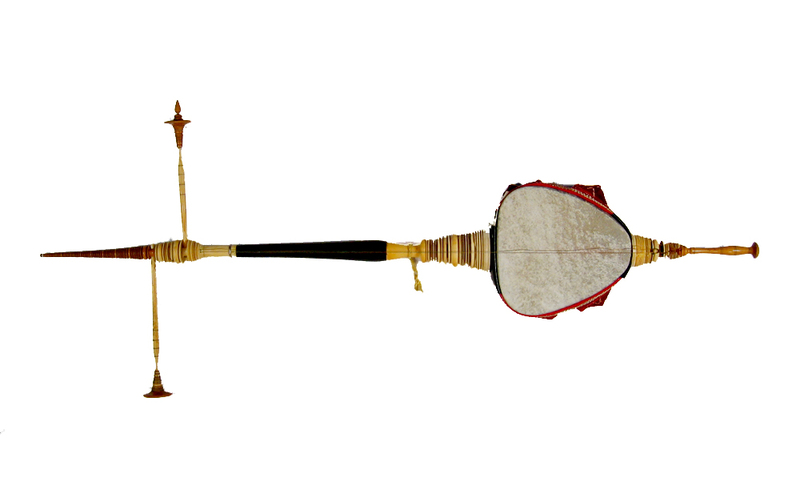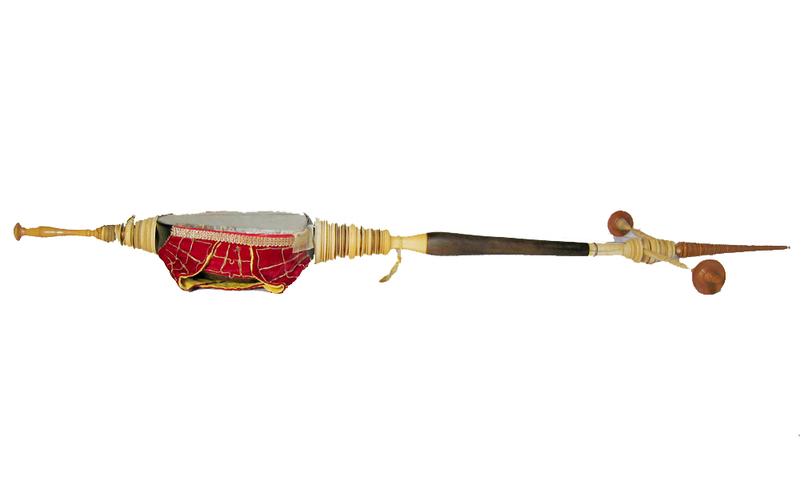Rebab
Title
Rebab
Video
Physical description
Rebab is a two-stringed bowed lute with a heart-shaped body of wood covered with a membrane made of parchment from a cow bladder. Pierced through the body, a long spike made of wood or ivory, or a combination of both, supports the strings at the top and serving as a foot at the bottom. The brass strings are stretched up across the membrane from a point on the leg (just below the body) to the elongated pegs in the upper part of the spike. When the rebab is bowed, the strings must be placed on the top of a little wooden bridge (srenten). The bridge is positioned between the strings and the upper part of the membrane. The bow uses a bunch of horsehairs (or plastic) loosely attached on the bow. In playing the rebab, the player must pull this horse hairs to a particular tension in order to produce desired volume and sound from the strings.
Historical background
It is most likely that rebab is originated from the Middle East, arriving in Indonesia in the period of the expansion of Islam in Indonesia in the 16th century. The incorporation of rebab into the gamelan ensemble happened during the period of the development of gamelan toward the formation of a large ensemble. This formation consisted of combining loud sounding, soft sounding instruments (Kunst), and vocal repertoire into an integrated musical concept (Sumarsam); hence, the development of a full size gamelan ensemble as it is commonly found today and its gendhing repertoire. Rebab became a leading instrument for its vocally inspired melodic delivery; this is because in a large degree vocal music inherently embody in the gendhing in this new musical concept.
Geography
Indonesia
Classification
321.311 Spike bowl lute: the resonator consists of a natural or carved-out bowl
Ensemble
Javanese gamelan
Materials
wood, cow bladder, ivory, brass, horsehairs, plastic
Contributors
Sumarsam (2004)
Collection
Citation
“Rebab,” Wesleyan University Virtual Instrument Museum 2.0, accessed January 5, 2026, https://wesomeka.wesleyan.edu/vim2/items/show/1.

